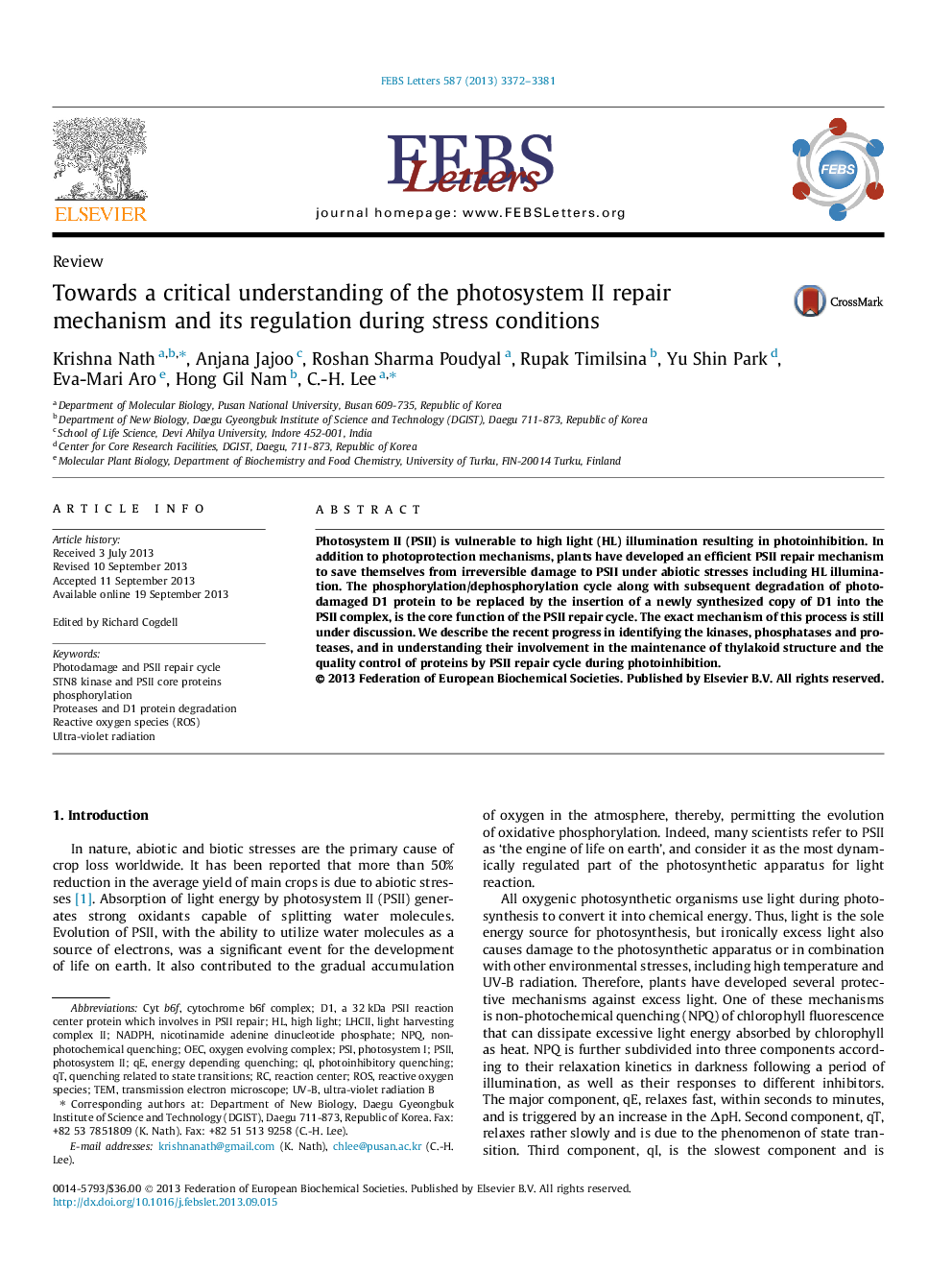| Article ID | Journal | Published Year | Pages | File Type |
|---|---|---|---|---|
| 10871055 | FEBS Letters | 2013 | 10 Pages |
Abstract
Photosystem II (PSII) is vulnerable to high light (HL) illumination resulting in photoinhibition. In addition to photoprotection mechanisms, plants have developed an efficient PSII repair mechanism to save themselves from irreversible damage to PSII under abiotic stresses including HL illumination. The phosphorylation/dephosphorylation cycle along with subsequent degradation of photodamaged D1 protein to be replaced by the insertion of a newly synthesized copy of D1 into the PSII complex, is the core function of the PSII repair cycle. The exact mechanism of this process is still under discussion. We describe the recent progress in identifying the kinases, phosphatases and proteases, and in understanding their involvement in the maintenance of thylakoid structure and the quality control of proteins by PSII repair cycle during photoinhibition.
Keywords
OECphotoinhibitory quenchingLHCIINPQCyt b6fUV-BPSIIPSINADPHROSUltra-violet radiationOxygen evolving complexTemhigh lightNon-photochemical quenchingphotosystem IPhotosystem IIcytochrome b6f complexlight harvesting complex IIreaction centerTransmission electron microscopenicotinamide adenine dinucleotide phosphateReactive oxygen species (ROS)Reactive oxygen species
Related Topics
Life Sciences
Agricultural and Biological Sciences
Plant Science
Authors
Krishna Nath, Anjana Jajoo, Roshan Sharma Poudyal, Rupak Timilsina, Yu Shin Park, Eva-Mari Aro, Hong Gil Nam, C.-H. Lee,
